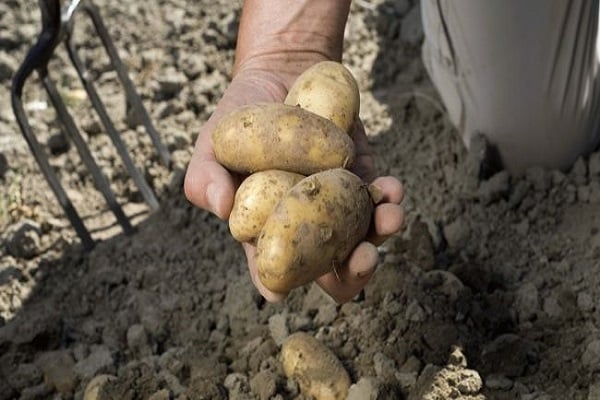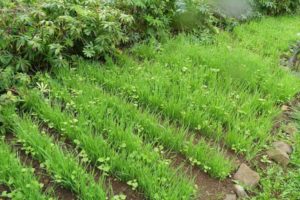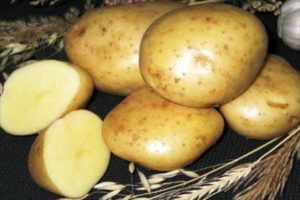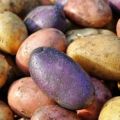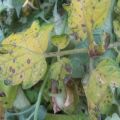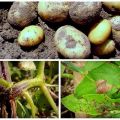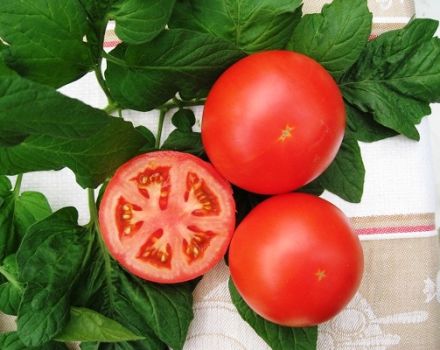How to deal with a potato nematode, its signs, description and treatment
Before starting the description of such a pest as the golden potato nematode, let's make a small introduction. It is not for nothing that potatoes are called "second bread" in our area. It is difficult to imagine a domestic feast without boiled, fried or baked potatoes. In the same way, it is not easy to find a vegetable garden, wherever potato bushes grow. Sometimes they are planted in small numbers, even in a confined space. And the main trouble for any gardener is when practically the main crop does not really come out. Reasons for low potato yield there may be several:
- bad weather conditions;
- improper or untimely care of plants;
- damage caused by pests.
In addition to the insidious Colorado beetles, the plantings of the nightshade family are attacked by the golden nematode. This is a worm that lives in the ground and affects the roots of potatoes, which is able to slow down the development of the root crop.
Notice! The pest carries out his insidious plans on the root system, and not on the tuber!
Before figuring out how to effectively deal with the potato nematode, let's take a closer look at it.
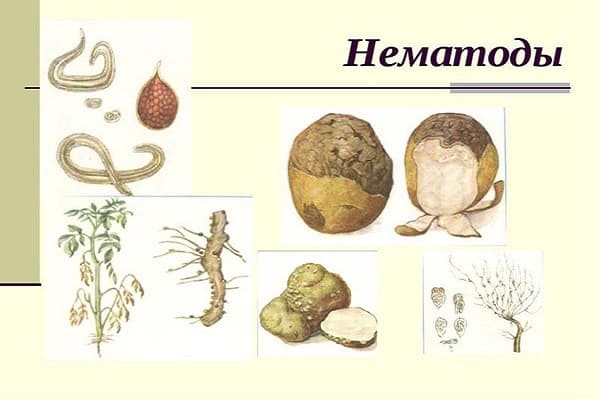
Pest and his bio-portrait
Nematoda is not just any one type of worm, but a whole group of hundreds of thousands of species. According to this indicator, they are second only to insects. A large percentage are herbivorous parasites. The most dangerous for potatoes is the aforementioned golden nematode. It is followed by stem and gallic. Let's dwell on each of the presented types.
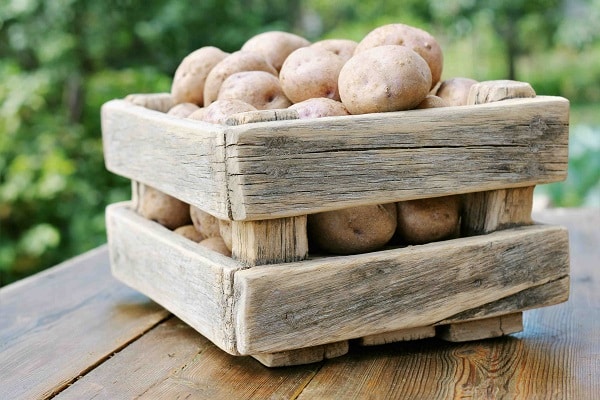
Golden nematode
The pest is a fan of only this culture of the nightshade family. The nematoda lives in the soil, affects the roots of potatoes, which is bad for their growth. Distributed in 40 countries of the world, including the countries of Europe and Russia. Was imported from South America.
The length of the nematode reaches from 0.3 to 1.3 millimeters. Because of such a miniature size, it is unrealistic to see a worm without a magnifying glass on a potato. Its larvae are white, and then, in the process of development, the adult becomes golden, which is why it has such a noble name. The mouth of the creature is piercing and sucking. With this spear-shaped apparatus, the pest clings to the roots, pierces them and dines on nutrients.
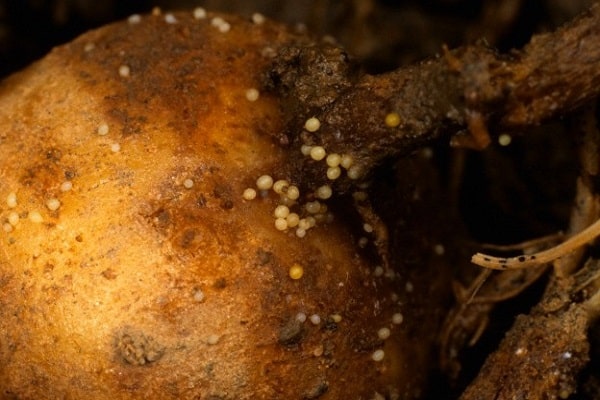
By winter, females lay eggs, each of which can contain up to two hundred embryos. During the flowering period of the potato, the larvae hatch, attach to its roots and actively absorb the juices, provoking a plant disease.
The sex ratio in nematodes depends on the weather and the availability of food. Females need more food than males.In general, worm-like men have a difficult fate - they live only 10 days, mate with their partners and die. Closer to the autumn season, the female swells and “gives birth”. In the southern regions, the potato nematode is encountered more often - it manages to give out two generations.
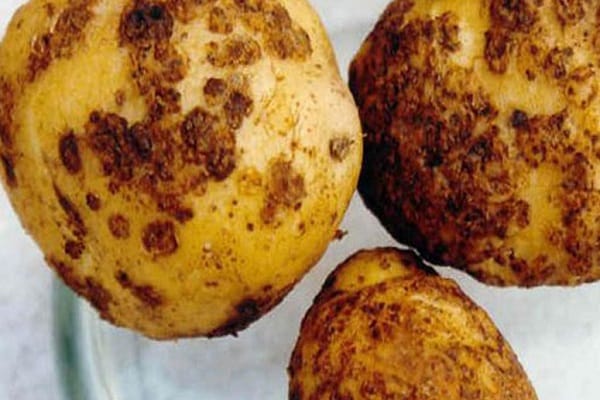
Important! The vitality of the golden potato nematode is explained by its high adaptability to the climatic features of the region - it does not care about frosts, and heat, and drought, and floods, and even many pesticides. The pest can simply hide in the soil for a decade and survive perfectly at the same time.
A golden potato nematode is detected as follows:

- plants grow slowly;
- the lower leaves die off;
- greens wither ahead of time;
- the stems are bent;
- potato flowering is weak or completely absent;
- bushes die, and tubers turn out to be small;
- yellowish balls are visible on the roots.
On potato lands, signs of nematodosis are the randomness of areas with underdeveloped plants, simply put, crops with bald patches. They appear after a month and a half after planting.

The potato nematode does not pose a direct danger to humans, but a poor potato crop can cause serious economic damage.
Nematode eggs are spread by winds, entrenching tools, rains, and planting material. The area of the pest is influenced by the fact that the owner of the plot plants potatoes in the same place. We fight the pest by controlling the spread of the population:
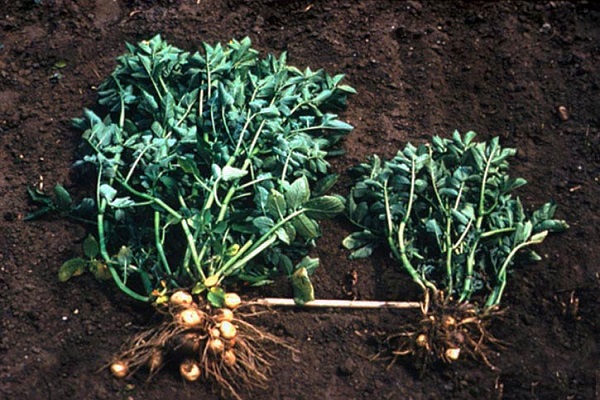
- After the harvest, the earth is dug up together with lime.
- When planting potatoes, a handful of ash, a pinch of bird droppings and three handfuls of cow or horse manure are dipped into each hole.
- They try to destroy the larvae of the nematodes after planting potatoes, treating the soil with chicken droppings in a ratio of 1:20 to water. From 5 to 10 liters of ready-made solution is consumed per square meter.
- In the spring, the fight against larvae is carried out using a bait - a tincture of potato sprouts. A kilogram of organic material is crushed, poured into 10 liters of water and this mush is insisted for exactly one day. The finished solution is introduced into the soil after the introduction of urea.
- When hilling, fertilize with mineral preparations.
For prevention, zealous owners follow the rules of crop rotation, when lupine, beans or rye are sown after potatoes. Do not forget about the primary methods of struggle: to clean the garden tools from clods of earth and disinfect. It is also advisable to turn to the use of those potato varieties that are resistant to nematode attacks, for example:
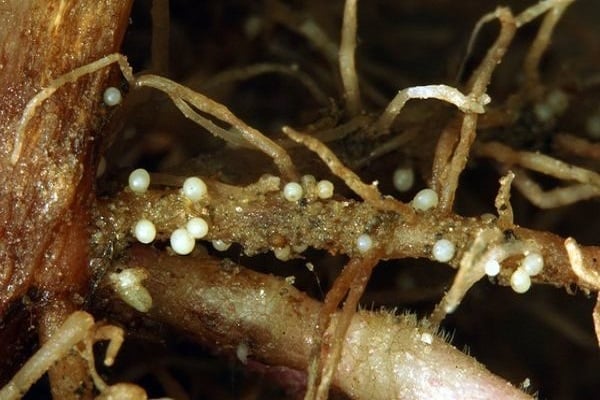
- "Aspia".
- Lukyanovsky.
- "Picasso".
- "Crystal".
- "Belorussky" and some others.
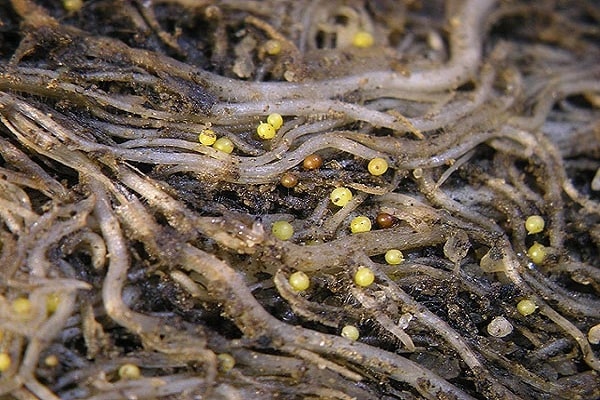
Stem nematode
This species acts on tubers during their growing period, as well as when the crop is kept in storage. Potatoes are not the only crop that is attacked by pests. Potato stem nematode, like golden nematode, is characterized by scanty dimensions from 0.7 to 1.4 millimeters, a thin and slightly curved body of a pale milky shade.
The pest invades the tubers underground and starts its dirty work. It is possible that the worm remains in the ground from previous plantings. Eggs of stem nematodes stoically tolerate frosts and practically do not die even in a fierce cold.

When the larvae grow up, the female is able to lay up to two and a half hundred eggs in a tuber. At standard-normal temperatures in summer (plus 20–25 degrees), the development of generation lasts almost a month, more often 25 days. The range of temperatures that do not interfere with the reproduction of pests can vary from +3 to +37. Dampness is favorable for the development of stem nematodes.
Signs of the presence of the pest are the lush bushiness of the plant and the thickening of the stem. Infection with worms is detected after harvest:
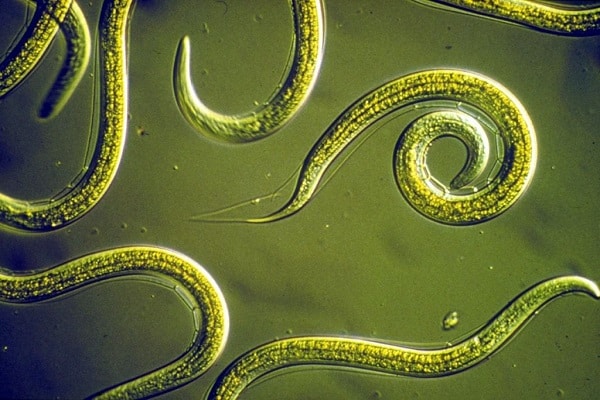
- white spots are noticeable under the potato peel - areas of accumulation of pests;
- the peel dries out and freely separates from the root crop;
- black spots appear on the tubers, which increase over time.
How to prevent disease of your favorite potato? To do this, you need to take measures to destroy the larvae and infected root crops. The works are performed as follows:
- laying healthy tubers for the winter;
- creating optimal conditions for keeping potatoes in vegetable stores;
- exclusion of nematode-infected specimens from the stock.
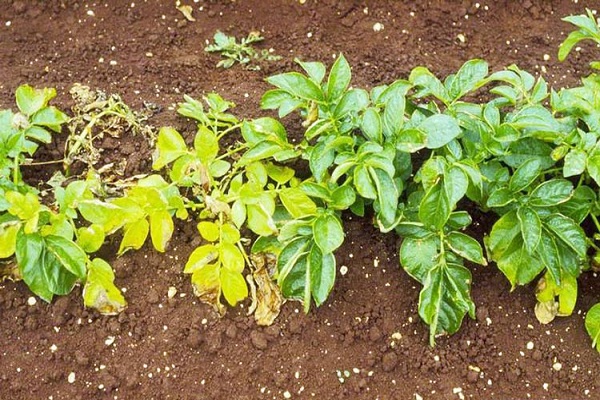
Thorough weeding, application of mineral fertilizers, digging up the soil at the end of the harvest - this is the golden set of rules that helps to repel the attacks of the potato invader. The owners are advised to alternate planting potatoes in the same place, since the nematode remains viable for a long time.
Important! Late varieties of potatoes less affected by pests than early ones.
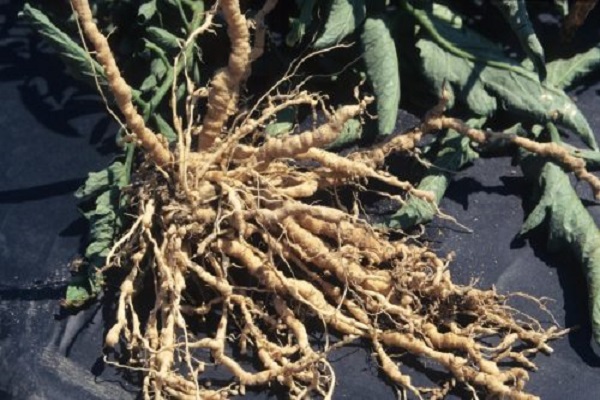
Gall nematode
This species can equally conveniently settle both on potato roots and penetrate into a tuber. But the nematode lays eggs only on the roots. Much more fertile than all naturally occurring nematodes - up to two thousand eggs. In this case, the roots swell, and the swellings on them are called galls. Sometimes bumps appear on root crops. Bumpy formations block the flow of water and nutrients into the plant, which translates into problems with potato yield.
Parasite control measures:
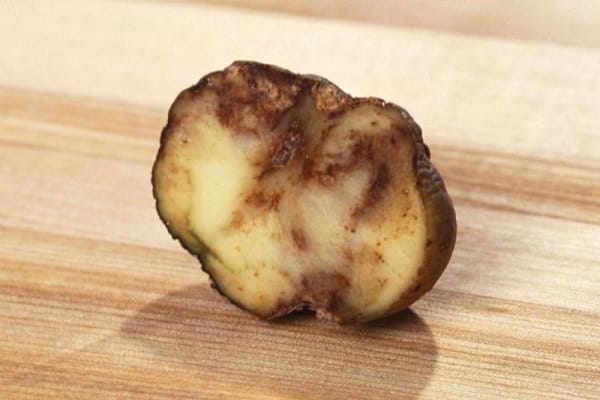
- skillful crop rotation;
- soil treatment with steam or chemicals;
- disinfection of potato seeds and tools.
Moisture deficiency leads to the reproduction of root-knot nematodes, and therefore their increased distribution is recorded in drought.
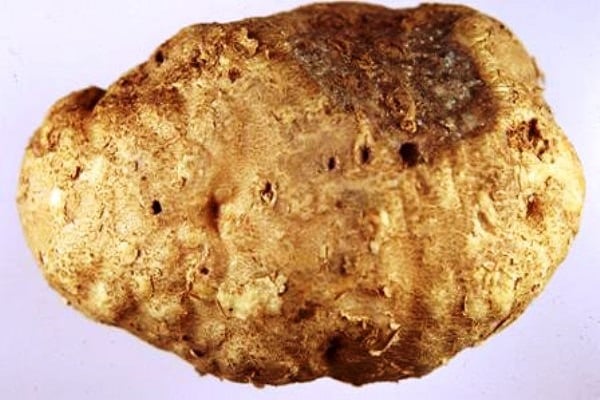
Aggressive fight
If you are not impressed by the previous description, and the treatment of potatoes with folk remedies does not save you, then you just need to stock up on such radical chemicals as:
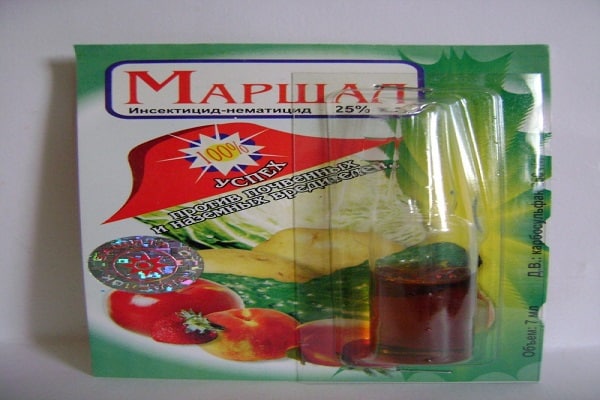
- "Nematicide".
- "Nemabakt".
- BI-58.
And act decisively!
Attention! Nematoda is a dangerous and resistant to various substances pest, therefore, with significant areas of damage to the potato field, it is necessary to stop amateur activities and invite a phytosanitary service to your site.
